Screen media activity and brain structure in youth: Evidence for diverse structural correlation networks from the ABCD study
- PMID: 30339913
- PMCID: PMC6487868
- DOI: 10.1016/j.neuroimage.2018.10.040
Screen media activity and brain structure in youth: Evidence for diverse structural correlation networks from the ABCD study
Abstract
The adolescent brain undergoes profound structural changes which is influenced by many factors. Screen media activity (SMA; e.g., watching television or videos, playing video games, or using social media) is a common recreational activity in children and adolescents; however, its effect on brain structure is not well understood. A multivariate approach with the first cross-sectional data release from the Adolescent Brain Cognitive Development (ABCD) study was used to test the maturational coupling hypothesis, i.e. the notion that coordinated patterns of structural change related to specific behaviors. Moreover, the utility of this approach was tested by determining the association between these structural correlation networks and psychopathology or cognition. ABCD participants with usable structural imaging and SMA data (N = 4277 of 4524) were subjected to a Group Factor Analysis (GFA) to identify latent variables that relate SMA to cortical thickness, sulcal depth, and gray matter volume. Subject scores from these latent variables were used in generalized linear mixed-effect models to investigate associations between SMA and internalizing and externalizing psychopathology, as well as fluid and crystalized intelligence. Four SMA-related GFAs explained 37% of the variance between SMA and structural brain indices. SMA-related GFAs correlated with brain areas that support homologous functions. Some but not all SMA-related factors corresponded with higher externalizing (Cohen's d effect size (ES) 0.06-0.1) but not internalizing psychopathology and lower crystalized (ES: 0.08-0.1) and fluid intelligence (ES: 0.04-0.09). Taken together, these findings support the notion of SMA related maturational coupling or structural correlation networks in the brain and provides evidence that individual differences of these networks have mixed consequences for psychopathology and cognitive performance.
Copyright © 2018 Elsevier Inc. All rights reserved.
Conflict of interest statement
Conflict of Interest: The authors have no conflicts of interest to declare.
Figures
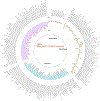
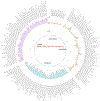
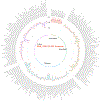
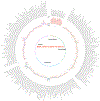
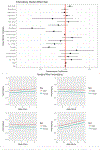
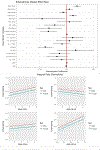
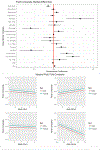
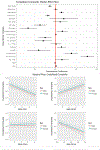
References
-
- 2010. R: A Language and Environment for Statistical Computing R Foundation for Statistical Computing, Vienna, Austria.
-
- Achenbach TM, 2009. The Achenbach System of Emprically Based Assessment (ASEBA): Development, Findings, Theory and Applications University of Vermong Research Center for Children, Youth, and Families, Burlington, VT.
-
- Altbacker A, Plozer E, Darnai G, Perlaki G, Horvath R, Orsi G, Nagy SA, Bogner P, Schwarcz A, Kovacs N, Komoly S, Clemens Z, Janszky J, 2016. Problematic internet use is associated with structural alterations in the brain reward system in females. Brain Imaging Behav 10, 953–959. - PubMed
Publication types
MeSH terms
Grants and funding
- U24 DA041147/DA/NIDA NIH HHS/United States
- U01 DA051039/DA/NIDA NIH HHS/United States
- U01 DA041120/DA/NIDA NIH HHS/United States
- U01 DA041093/DA/NIDA NIH HHS/United States
- U24 DA041123/DA/NIDA NIH HHS/United States
- K12 DA000357/DA/NIDA NIH HHS/United States
- U01 DA041089/DA/NIDA NIH HHS/United States
- U01 DA041106/DA/NIDA NIH HHS/United States
- U01 DA041117/DA/NIDA NIH HHS/United States
- U01 DA041148/DA/NIDA NIH HHS/United States
- U01 DA041174/DA/NIDA NIH HHS/United States
- U01 DA041134/DA/NIDA NIH HHS/United States
- K23 AA025399/AA/NIAAA NIH HHS/United States
- U01 DA041022/DA/NIDA NIH HHS/United States
- U01 DA041156/DA/NIDA NIH HHS/United States
- KL2 TR001444/TR/NCATS NIH HHS/United States
- U01 DA041025/DA/NIDA NIH HHS/United States
- U01 DA050989/DA/NIDA NIH HHS/United States
- U01 DA041028/DA/NIDA NIH HHS/United States
- U01 DA041048/DA/NIDA NIH HHS/United States
LinkOut - more resources
Full Text Sources
Medical

